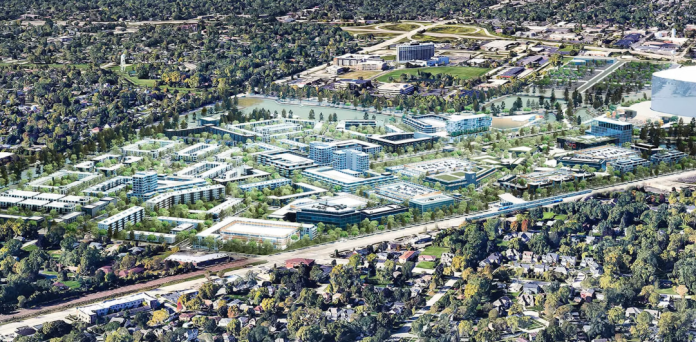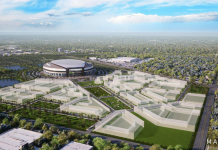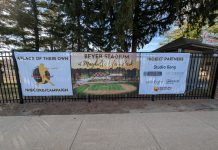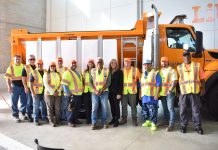Chicago Construction News staff writer
Chicago Bears President and CEO Kevin Warren says the organization remains “extremely focused” on building a new stadium in Arlington Heights, emphasizing that the team’s plan is moving forward.

“That is our plan,” Warren told reporters after the Bears’ joint practice with the Miami Dolphins at Halas Hall. “We strongly believe that is the only location in Cook County that will allow us to build a new Chicago Bears stadium with a fixed roof.”
The Bears plan to construct a state-of-the-art stadium on the 326 acres they own at the former Arlington International Racecourse site. Warren said the team has been meeting weekly with Arlington Heights officials over the past several months.
“We are making great progress,” he said. “Those meetings are going well. Making excellent, excellent progress.”
While the stadium design is complete, the project hinges on the Illinois Legislature passing a “mega-project bill” that would enable the Bears to negotiate property tax assessments with local governments. Warren said the team expects a vote during the fall veto session.
“The plan still is to proceed forward this year and hopefully receive a positive vote in the fall veto session from the Illinois state government to allow us to proceed forward with our project,” Warren said. “It is very, very important that it passes because without that legislation, we are not able to proceed forward.”
The Bears estimate the project would create about 56,000 construction jobs and 9,100 permanent jobs, providing a major economic boost to the region.
“You are talking about putting people to work,” Warren said. “This is an economic bill that would give people jobs, allow them to work, and get to work. Yes, the Bears would benefit from it. But there is much more than the Bears benefiting from this bill. The entire state of Illinois would benefit from it.”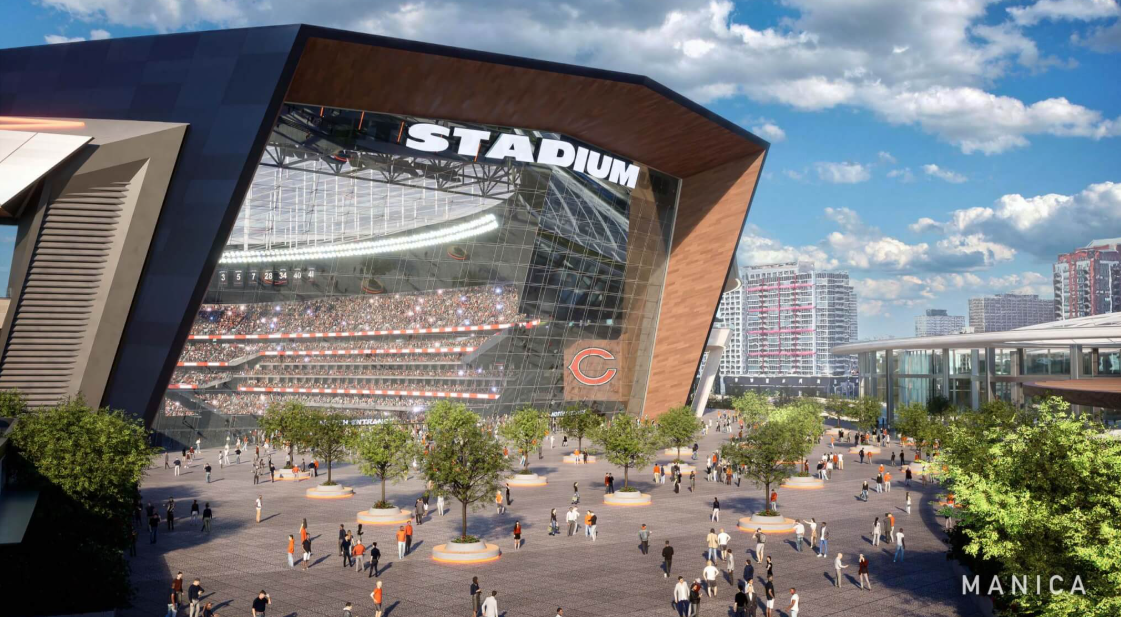 The design of the proposed new stadium was led by
The design of the proposed new stadium was led by
Manica Architecture, and features a fixed translucent roof and a multi-story glass façade, aiming to create a modern yet traditional aesthetic. The design incorporates elements inspired by Chicago’s iconic Field Museum, such as ceramic, metal panels, and wood.
The proposed stadium is part of a broader $4.7 billion development plan that includes a public park and recreational campus along Lake Michigan.

